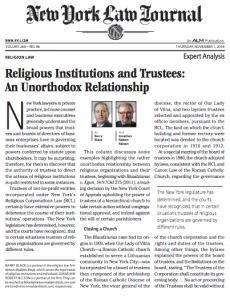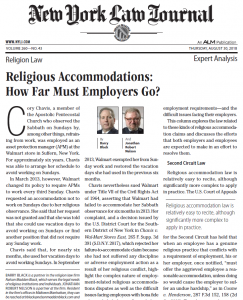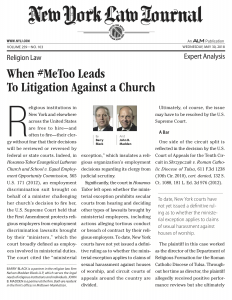In the wake of the Tree of Life synagogue shooting and other recent attacks on houses of
worship, the newly-released FBI hate crime statistics are of particular interest and concern. The
number of hate crime incidents reported to the Federal Bureau of Investigation (“FBI”) increased
about 17 percent in 2017 compared with 2016, according to the annual Hate Crime
Statistics report released by the FBI’s Uniform Crime Reporting (“UCR”) program.
Law enforcement reported 7,175 hate crimes to the UCR in 2017, up from 6,121 in 2016.
According to the FBI, the most common bias categories in single-bias incidents were
race/ethnicity/ancestry (59.6) percent, religion (20.6 percent), and sexual orientation (15.8
percent). In addition to the 7,106 single-bias incidents reported last year, there were also 69
multiple-bias hate crimes reported.
About 5,000 of the hate crimes reported were categorized as crimes against persons, such
as intimidation or assault. About 3,000 were considered crimes against property, such as
vandalism, robbery, or burglary. (Some hate crime incidents were classified as both crimes
against persons and crimes against property.)
The FBI said in a statement that it is working with law enforcement partners across the
country to encourage reporting of hate crime statistics. Next year, FBI personnel will provide
training for law enforcement officers on how to identify bias-motivated incidents and report that
data to the FBI’s UCR program.
The Hate Crime Statistics Act
On April 23, 1990, Congress passed the Hate Crime Statistics Act, 28 U.S.C. § 534,
which required the attorney general to collect data “about crimes that manifest evidence of
prejudice based on race, religion, sexual orientation, or ethnicity.” The attorney general
delegated the responsibilities of developing the procedures for implementing, collecting, and
managing hate crime data to the director of the FBI, who, in turn, assigned the tasks to the UCR
Hate Crime Statistics Program.
For more than two decades, thousands of city, county, college and university, state, tribal,
and federal law enforcement agencies have voluntarily submitted data to the UCR on crimes
motivated by prejudice based on religion, race, gender and gender identity, disability, sexual
orientations, or ethnicity.
The FBI’s UCR program defines hate crime as a committed criminal offense that is
motivated, in whole or in part, by the offender’s bias or biases against a religion, race, disability,
sexual orientation, ethnicity, gender, or gender identity.
For purposes of the FBI’s UCR program, even if the offender was mistaken in his or her
perception that the victim was a member of the group he or she was acting against, the offense is
still a bias crime because the offender was motivated by bias against the group.
The FBI UCR program’s hate crime data collection gathers data on the following religion
biases:
Anti-Buddhist
Anti-Catholic
Anti-Eastern Orthodox (Russian, Greek, Other)
Anti-Hindu
Anti-Islamic
Anti-Jehovah’s Witness
Anti-Jewish
Anti-Mormon
Anti-Multiple Religions, Group
Anti-Other Christian
Anti-Other Religion
Anti-Protestant
Anti-Atheism/Agnosticism/etc.
State Statistics
A total of 16,149 agencies across the country report hate crime statistics to the FBI.
California (with a population of nearly 40 million) has 232 agencies that submit incident reports
– the most of any state. Florida (with a population of about 20 million) has 67 submitting
agencies.
Among other states, there are 15 reporting agencies in New Jersey, 44 in Connecticut, 23
in Pennsylvania, and 74 in New York.
Agencies may specify the location of an offense within a hate crime incident as one of 46
location designations. Because not all reporting agencies have made the programming changes to
allow the relatively new location designations, the data collected to date are not yet
representative of all location designations, according to the FBI. The location designations of the
hate crime incidents reported in 2017 were:
27.5 percent of hate crime incidents occurred in or near residences/homes.
17.0 percent took place on highways/roads/alleys/streets/sidewalks.
10.5 percent happened at schools/colleges (based on three designations).
5.8 percent took place in parking/drop lots/garages.
4.1 percent occurred in churches/synagogues/temples/mosques.
2.7 percent took place in restaurants.
1.9 percent occurred in commercial office buildings.
1.8 percent occurred at parks/playgrounds.
1.6 percent happened in air/bus/train terminals.
1.6 percent took place in government/public buildings.
1.5 percent took place in convenience stores.
1.4 percent happened in bars/nightclubs.
1.3 percent happened in department/discount stores.
1.1 percent occurred in specialty stores (TV, fur, etc.).
1.0 percent took place in drug stores/doctors’ offices/hospitals.
1.0 percent took place in grocery/supermarkets.
6.7 percent of hate crimes occurred in the remaining specified location categories or in
multiple locations.
11.5 percent took place in other/unknown locations.
Of the 1,564 reported hate crime incidents that occurred due to a religious bias:
23.0 percent happened in or near residences/homes.
15.0 percent occurred in churches/synagogues/temples/mosques.
12.7 percent transpired at schools/colleges (based on three designations).
8.9 percent took place on highways/roads/alleys/streets/sidewalks.
4.0 percent occurred in parking/drop lots/garages.
2.0 percent took place in commercial office buildings.
15.3 percent occurred in the remaining specified location categories or in multiple
locations.
19.1 percent took place in other/unknown locations.
The Future
The FBI has said that hate crimes are the highest investigative priority in its civil rights
program.
Additionally, the U.S. Department of Justice has launched a new hate crimes webpage,
https://www.justice.gov/hatecrimes, which has information for law enforcement on reporting
incidents.



